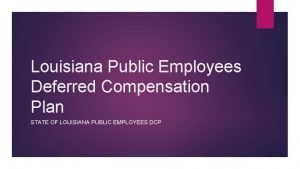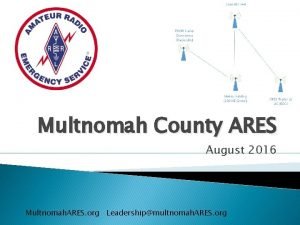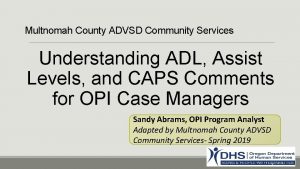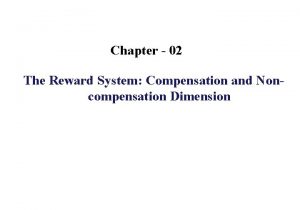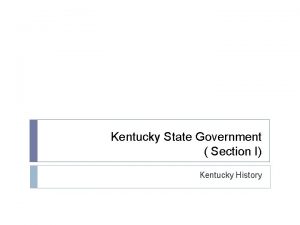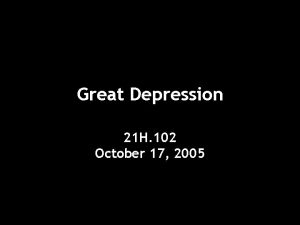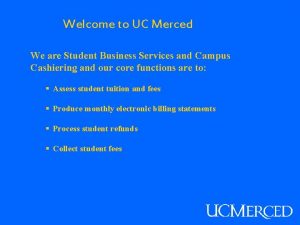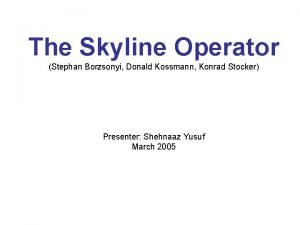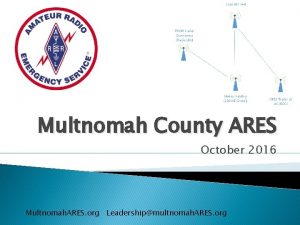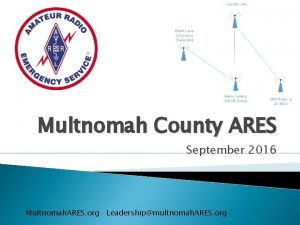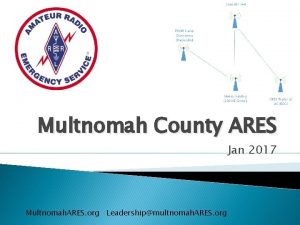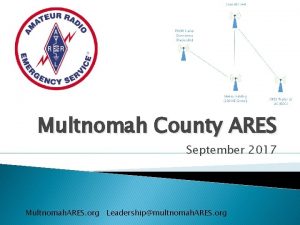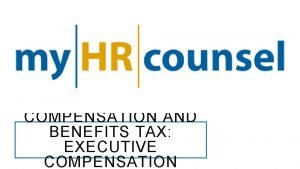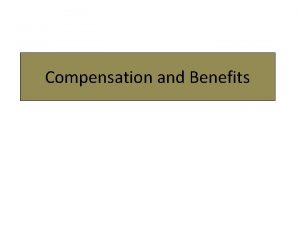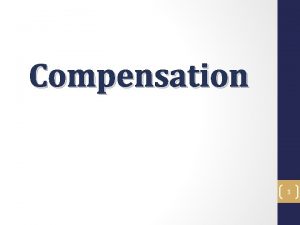Multnomah County Deferred Compensation Plan Louisville Skyline Deferred




























- Slides: 28

Multnomah County Deferred Compensation Plan Louisville Skyline Deferred Comp 101

ING Financial Partners, LLC 200 SW Market St. , Suite 1700 Portland, OR 97201 503 -937 -0378 Securities and investment advisory services offered through ING Financial Partners, members SIPC

Disclosure Important Information You should consider the investment objectives, risks, and charges and expenses of the investment options carefully before investing. Fund prospectuses and an information booklet can be obtained by contacting your local representative. Please read carefully before investing. (bold and same size as majority of text in presentation) Group annuity contracts offered through a retirement program are long-term investments designed for retirement purposes. Money distributed will be taxed as ordinary income in the year the money is received. Account values fluctuate with market conditions and, when surrendered, the principal may be worth more or less than the original amount invested. An annuity does not provide any additional tax deferral benefit, tax deferral is provided by the plan. Annuities may be subject to additional fees and expenses to which other tax-qualified plan funding vehicles may not be subject. However, annuities provide features and benefits such as lifetime income payments and death benefits that may be valuable to you. The Participant Information Booklet and fund prospectuses contain additional information about the expenses associated with the investment options. Insurance products issued by ING Life Insurance and Annuity Company. Securities distributed by ING Financial Advisers, LLC (member SIPC), One Orange Way, Windsor, CT 06095 -4774 or other broker/dealers with which ING has selling agreements.

Sources of retirement income In 2005, 30 out of every 100 workers received Social Security benefits and by 2050, that number is expected to grow to 50 our of every 100 workers. 1 How will you support your future objectives? 40 % Social Security 20 % Pension payments from employer Your 457(b), other personal investments and earned income 40% Annual Trustees’ Report, Social Security Finances, A Primer; August 2008. Pie chart source: Employee Benefit Research Institute (EBRI) estimates from the Current Population Survey, March 2009. 1 4

Expenses don’t end when you retire A healthy 65 -year old man or woman may need to live without a paycheck for as long as they lived with one. Living off income Collecting a paycheck 25 35 45 65 55 75 Males have a 50% chance of living past. . . Females have a 50% chance of living past. . . Source: National Center for Health Statistics, Health, United States, 2008, (Table 25) 5 85 age 82 age 85 95

Effects of Inflation How much will your current income be worth in 20 years? $30, 000 $25, 878 $22, 323 $25, 000 $19, 256 $16, 610 $20, 000 $15, 000 $10, 000 $5, 000 $0 Today In 5 years In 10 years Assumptions: $30, 000 annual salary and 3% rate of inflation. 6 In 15 years In 20 years

Will you have enough to fund your retirement? With ING’s Financial Analysis tool, you and your financial professional can run a report on your financial status in just 15 minutes! IMPORTANT: The illustrations or other information generated by EFA regarding the likelihood of various investment outcomes are hypothetical in nature, do not reflect actual investment results and are not guarantees of future results. 7

Catch-up contributions can help make up for lost time Catch-up contributions can help reduce your retirement income shortage. Income Needs and Sources If you are over age 50. . . You can contribute an additional $5, 500 above the 2012 annual limit of $17, 000. The limit is subject to annual cost of living adjustments. 8

It’s Wise to Start Now! This hypothetical illustration is based on an annual effective rate of return of 6% and does not reflect the performance of any specific investment option. It does not take into account the payment of taxes and does not intend to predict investment results. The illustration does not include fees or expenses that an investment product could assess. If included, these fees would reduce the figures shown above. Systematic investing does not ensure a profit or guarantee against loss. You should consider your ability to invest consistently in up as well as down markets. Not intended to serve as financial advice or as a primary basis for your investment decisions. Taxes are generally due upon withdrawal. 9

A tax-deferred plan can turn pre-tax contributions of $75 into $100. Out of every $100. . . You could let the government take $25 in taxes* and save only $75. . . Or you could put $100 into a tax-deferred plan. *Assumes a 25% Federal tax bracket. Taxes are due upon withdrawal of assets from the plan. 10

Your Contribution Limits For 2012, 457(b) contributions are limited by: – The lesser of 100% of includible compensation; or – $17, 000 But there are other provisions which may help you contribute more to your existing plan. . . 11

Consider the Special 457(b) Catch-Up The 457(b) Special Catch-up Provision* permits increased annual contributions. The catch-up limit is the lesser of: Twice the annual contribution limit (for 2012, that would be $34, 000); or The annual contribution limit for the year, plus underutilized amounts from prior taxable years (only those years beginning on or after 1/1/1979 in which you were eligible to participate in your employer’s 457(b) plan can be used). * A calculation is required to ascertain eligibility. 12

Consider the Age 50+ Catch-Up Employees age 50 and older who participate in a governmental 457(b) may be eligible to make additional 457(b) contributions. For 2012, the potential additional contribution is $5, 500* * Subject to annual cost of living adjustments in $500 increments. NOTE: The age 50+ Catch-up and the Special 457(b) Catch-up cannot be used simultaneously. You must use whichever catchup lets you defer the greater amount. 13

Traditional 457(b) or Roth 457(b)… q As a result of recent tax code changes, plan participants now can choose between a Traditional 457(b) option or a Roth 457(b) option q Before opening an account you may want to… Consider the following…

Consider a traditional 457(b) if you. . . Enjoy the benefits of current tax deferral Need to take home as much of your pay as possible Expect to be in a lower tax bracket in retirement 15

Consider a Roth 457(b) if you. . . Like the idea of possible tax-free retirement income* Are confident of salary increases over time Can afford a reduction in takehome pay * Certain conditions apply 16

Consider both if you. . . Aren’t sure whether your taxes will be higher or lower when you retire Want to diversify your tax strategy Still want to reduce your current taxable income Seek the advice of a tax attorney or tax advisor prior to making a tax-related insurance/investment decision. 17

Crunch the Numbers If you were to contribute to a (pre-tax) 457(b) plan, your monthly numbers could look like this: Gross Income Monthly Contribution Adjusted Gross Income Taxes* Disposable Income $3, 000 $100 $2, 900 $725 $2, 175 If you were to contribute to a traditional after-tax savings account, your monthly numbers could look like this: Gross Income Taxes* Subtotal Monthly Contribution $3, 000 $750 $2, 250 $75 * This hypothetical illustration assumes a 25% Federal Income Tax Rate only for a single filer. Any applicable state income taxes would change the results of this illustration. You should always consult with an independent tax advisor or financial professional before making tax or investment related decisions. 18 Disposable Income $2, 175

Tax-Deferred vs. Taxable Investments $50, 000 $45, 565 Estimated Account Accumulation $100 invested monthly for 20 Years at 6. 00% $40, 000 $30, 899 $30, 000 $20, 000 457(b) contribution (pre-tax) $10, 000 Savings account (after-tax) $0 1 2 3 4 5 6 7 8 9 10 11 12 13 14 15 16 17 18 19 20 Based on the illustration assumptions described below, a lump-sum distribution from the 457(b) plan after 20 years may be worth $34, 174 (exclusive of tax penalties for early withdrawal). This illustration assumes current and future federal income tax rates of 25%. State income tax (if applicable) is excluded from the illustration. Income tax is due upon distribution from the tax-deferred plan. A 15% annual capital gains tax has been applied to the after-tax savings account. This illustration is intended to show the impact of pre-tax and after-tax investing and illustrate investment growth potential of each. The assumed hypothetical investment growth per year is shown for illustrative purposes only and is not indicative of any specific investment or investment vehicle. Systematic investing does not assume a profit or protect against loss. You should consider your ability to continue investing in up as well as down markets. These figures do not include fees or expenses that the product would assess, including mortality and expense risk charge (M&E), a daily asset charge and an administrative fee. If included, these fees would reduce the figures of the tax-deferred product shown above. Refer to the prospectus/prospectus summary/information booklet for more information about fees. Lower maximum tax rates on capital gains and dividends would make the investment return for the taxable investment more favorable, thereby reducing the difference in the performance between the accounts posted above. Consider your personal investment horizon as well as your current and anticipated income tax bracket when making an investment decision, as these may further impact the results of this illustration. Bear in mind that changes in tax rates and tax treatment of investment earnings may impact the comparative results. 19

Payroll deductions make contributing painless! Pay yourself first! Contributions are automatically deducted from your pay. When you don’t see it, you don’t miss it. And you don’t spend it! 20

Rule of thumb. . . How much to save and when to begin Early stages of your work life 10 -15% Later stages of your work life Review every two to three years and adjust accordingly. Source: Saving Fitness; A Guide to Your Money and Your Financial Future, U. S. Department of Labor, Employee Benefits Security Administration. September 2008. 21

What makes up a diversified portfolio? Think of your investment portfolio as a well-balanced diet. 22

Diversify your investment “mix” based on your level of risk-tolerance. POTENTIAL REWARD Higher Lower AGGRESSIVE MODERATE The higher the risk potential, the higher long-term reward potential CONSERVATIVE The lower the risk potential, the less longterm reward potential RISK Higher Using diversification as part of an investment strategy neither assures nor guarantees better performance and cannot protect against loss in declining markets. 23

Diversify your investment “mix” based on your level of risk-tolerance. POTENTIAL REWARD Higher Lower Potential risk/reward balance of asset classes Global/International Small/Mid/Specialty Large Cap Growth Large Cap Value Balanced Bonds Stability of Principal RISK Higher Using diversification as part of an investment strategy neither assures nor guarantees better performance and cannot protect against loss in declining markets. 24

Periodically Review Your Portfolio At least once a year, you need to see if current % in each asset class matches your desired % and rebalance as necessary. Account rebalancing neither ensures a profit nor guarantees against a loss in a declining market. 25

Now what? Look at the big picture. Where will your retirement income from? Other qualified plans Working or second career Employersponsored pension plans Savings (IRAs, CDs) Investments 26 Social Security

Your Next Steps… • Enroll with ING – Complete ING Enrollment form or the Multnomah County EZ Enrollment Form – Return paperwork to ING Local Office or to Multnomah County’s Deferred Compensation Department • Set-up an appointment with a local representative – ING Local Office Contact Information • 200 SW Market Street, Suite 1700 Portland, OR 97201 • Ph# 503 -937 -0378 or 800 -238 -6281 27

Questions 28 28
 La deferred comp
La deferred comp Louisiana deferred compensation
Louisiana deferred compensation Multnomah county library
Multnomah county library Multnomah county ares
Multnomah county ares Advsd
Advsd Compensation and non compensation dimensions
Compensation and non compensation dimensions Pioneer highschool map
Pioneer highschool map Dr amit dwivedi louisville ky
Dr amit dwivedi louisville ky Resoue
Resoue Mammoth cave to louisville
Mammoth cave to louisville Louisville sales tax
Louisville sales tax Va fiduciary hub louisville ky
Va fiduciary hub louisville ky Uofl bursar
Uofl bursar Louisville ladder labels
Louisville ladder labels Vishing in louisville
Vishing in louisville The louisville flood
The louisville flood Yazoo land fraud definition
Yazoo land fraud definition Louisville writing project
Louisville writing project Louisville flood 2009
Louisville flood 2009 Uc merced student business services
Uc merced student business services Newspaper banner examples
Newspaper banner examples Gambar penggunaan divide and conquer
Gambar penggunaan divide and conquer Marcus radue skyline technologies site: linkedin.com
Marcus radue skyline technologies site: linkedin.com Settegast method patella
Settegast method patella Skyline operator
Skyline operator Spectografo
Spectografo Skyline operator
Skyline operator Nissan skyline revolution
Nissan skyline revolution Skyline elementary tacoma
Skyline elementary tacoma
